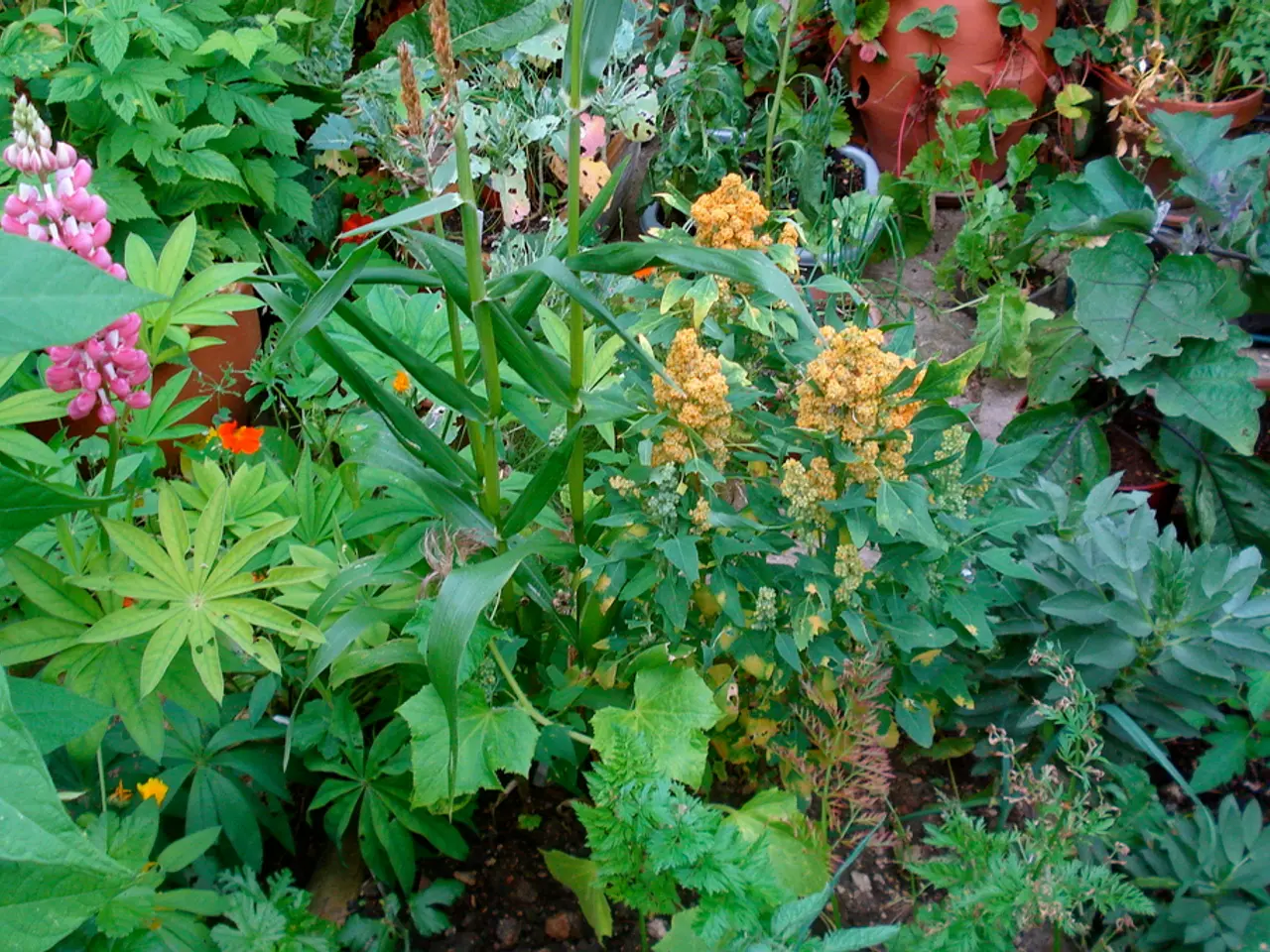Transform Your Yard into a Nutrient-Rich Ecosystem: Eco-Friendly and Nutritious Landscaping for Your Well-being and Earth's Preservation
In the quest for a sustainable and productive garden, the self-sustaining food forest garden is an innovative solution. This design mimics a natural ecosystem, creating a layered, diverse ecosystem of plants that support each other, providing food with minimal input.
The food forest garden is structured into multiple layers, starting with the canopy, understory, herbs, groundcover, and roots. The canopy, consisting of fruit or nut trees, provides shelter, encourages wildlife, and produces fruits or nuts. The understory, comprising shrubs and perennial plants, includes options like hazelnut, elderberry, cane fruits, and berry bushes such as honeyberry, Aronia berries, and currants.
Groundcover plants, such as Alpine strawberry, Canadian wild ginger, and Eastern teaberry, not only add flavour to recipes but also improve soil health. Root plants, like dandelion, burdock, and chicory, are unique additions with culinary applications. Carrots, turnips, potatoes, sunchoke, beets, and onions are root plants that loosen the soil and add flavour to recipes.
The food forest garden is designed to sequester carbon, enhance biodiversity, improve soil health, and help manage water usage. This is achieved through careful site planning, soil and water management, and minimal but attentive maintenance.
Site analysis and planning are crucial. Factors such as sunlight, wind, water flow, and soil quality should be considered. Permaculture principles like P.A. Yeomans' Scale of Permanence can guide the design process, prioritising steps such as shaping water access and retention, then planning zones and plant placement for efficiency and sustainability.
Soil health management is essential for the success of a food forest garden. Maintaining soil fertility and structure can be achieved through mulching, composting, cover crops, and avoiding disturbance. Deep mulching suppresses weeds and retains moisture, reducing irrigation needs.
Efficient water management is another key aspect. Swales, rain gardens, or drip irrigation can be adapted to the site to reduce water use and ensure plants have adequate moisture year-round.
Once established, a well-designed food forest requires less weeding, watering, or fertilizing. Monitor plant health, add mulch annually, prune for airflow and productivity, and harvest regularly to encourage growth. Beneficial insects and wildlife help maintain balance in the food forest.
Food forests evolve over time, so ongoing observation and adaptation are necessary. Adding new guild plants or replacing less productive species keeps the system resilient and productive.
The food forest garden attracts beneficial insects and pollinators, making it a haven for biodiversity. Medicinal and culinary herbs are incorporated, with edible flowers like pansies, daylilies, and chamomile adding a delightful touch. Herbs that self-sow, such as borage and dill, can help maintain the garden with minimal effort.
For urban gardeners, smaller fruit trees like dwarf cherry, apple, persimmon, and pawpaw are viable options. Canopy options include large plants like elms, hemlocks, or cedar, and nut and fruit trees like oak or pecan.
The A.M. Leonard soil knife is a useful tool for weeding, pruning, and harvesting in a food forest garden. With careful design, maintenance, and adaptation, a self-sustaining food forest garden can thrive with reduced human input, providing a bounty of food and fostering a thriving ecosystem.
Maintaining this self-sustaining food forest involves integrating a variety of plant species, such as fruit or nut trees in the canopy layer, shrubs and perennial plants in the understory, groundcover plants, root plants, and even herbs that add flavor to recipes and improve soil health.
By adopting sustainable practices like efficient water management, soil health management, and following permaculture principles, a food forest garden can sequester carbon, enhance biodiversity, improve soil health, and help manage water usage, making it an appealing choice for both urban and rural lifestyles, and a significant contribution to sustainable living.





